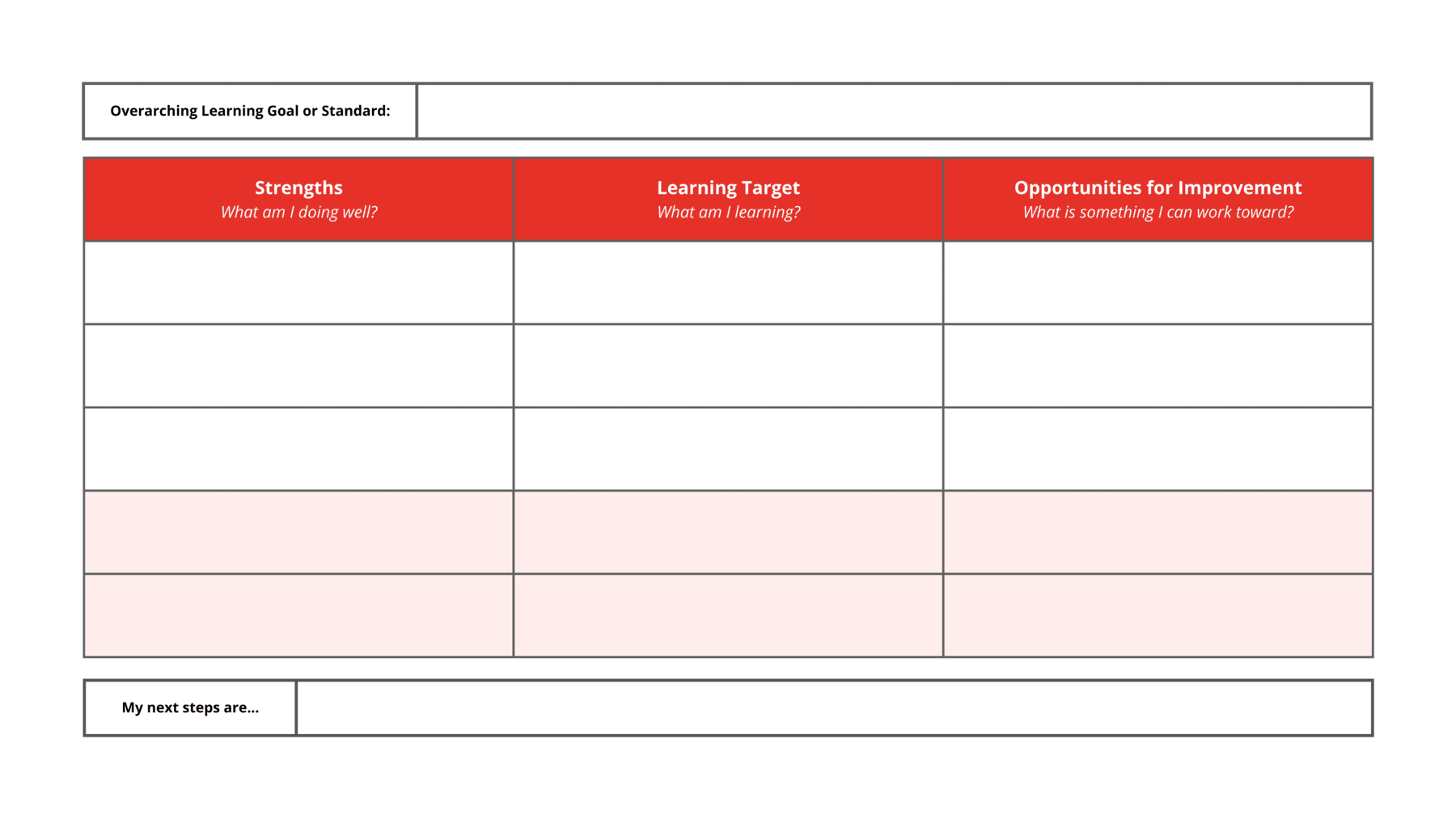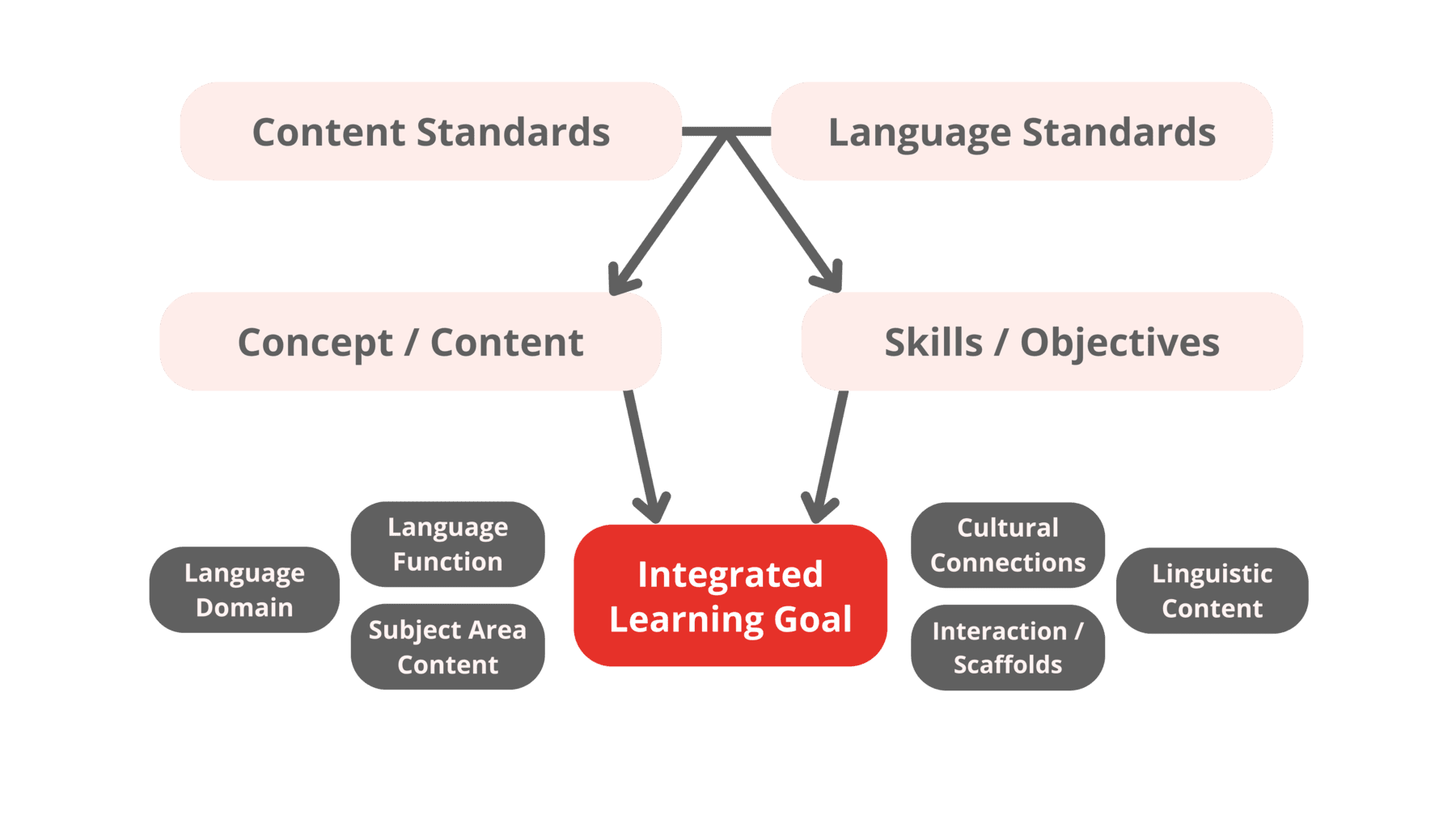A Single-Point Rubric - What is it?
A single-point rubric is a simplified rubric that clarifies the learning goals for a task or learning experience, as well as provides an easy entry point for student self- and peer-assessment (Dietz, 2000). This type of rubric is used for capturing assessment feedback, and not just as a grading tool. Single-point rubrics often break down the learning targets and success criteria into smaller pieces, or more concrete tasks, so that students can clearly identify their strengths and areas for improvement. These rubrics also give an option for layered feedback, starting with student self-assessment and building towards teacher feedback, when needed.
Click here to download an editable copy of the template
Adding a Linguistic Lens to your Rubric
A single-point rubric is an effective tool to support meaningful feedback on learning, and its use is not limited to only highlighting subject-area content. In a culturally and linguistically diverse classroom, the single-point rubric becomes an invaluable tool to help students and teachers identify student progression in both content learning, as well as language acquisition. By taking an integrated learning goal - one which includes both the subject-area goal, as well as the linguistic demands of a task - and parsing it out into a single-point rubric, both the teacher and student can have clarity around the task expectations. Additionally, this allows both content and language to be assessed in meaningful ways and highlights areas where one or the other may be a barrier for student learning.
By taking an integrated learning goal - one which includes both the subject-area goal, as well as the linguistic demands of a task - and parsing it out into a single-point rubric, both the teacher and student can have clarity around the task expectations. Additionally, this allows both content and language to be assessed in meaningful ways and highlights areas where one or the other may be a barrier for student learning.
Secondary example rubric used with an Intermediate/Advanced language learner. Initial self-feedback is written by the student in black pen, the peer's feedback is provided in blue, and the teacher’s final feedback is noted in pink.
By separating out the content and the language goals, the student has the ability to demonstrate their content understanding in multiple ways based on their language proficiency. In highlighting the language needed for the task, the rubric provides valuable evidence of a student’s language progression, as well as clarity on what type of language the student will need to interact with the task in a meaningful way.Adapting for the early elementary classroom
The narrative portions of the single-point rubric lend themselves to utilization in an upper elementary or secondary class. With young learners in mind, these rubrics can also work in lower primary courses through the use of scaffolded interaction with the rubric content, as well as student-chosen emojis or numerical scales to self-assess learning. As seen in the example below, the rubrics can support interdisciplinary learning connections. Notice the shading of the boxes indicate different areas of focus:- subject-area targets, such as Science (white section),
- SEL or 21st Century Skills (green section),
- and literacy and language development (blue section) throughout all subject areas.
Elementary example rubric. Faces and numerical values were used by the student to self-assess their learning.
This type of rubric provides metrics for student learning in both content and language. The distinction between the two allows the teacher to find places where language may be a barrier to student learning or assessment. In a co-teaching environment, the content area teacher may be responsible for providing feedback in the content-specific portion of the rubric, while the language specialist focuses on the language used in the task. Alternatively, in an integrated classroom setting, both the student and teacher should be empowered to thoughtfully reflect on the content and language understanding and identify steps for improvement in both areas.Try creating your own! Make a copy of our Single-Point Rubric Template and share your examples and ideas with us on Twitter @planonatlas #singlepointrubric #CLDrubric Want more support creating integrated learning goals and building assessments that meet the needs of multilingual learners? Review our Professional Development services or send us your questions to [email protected].
About The Author

Marie Mugabe
Senior Professional Development Manager
Atlas Team
Marie Mugabe is a Senior Professional Development Manager at Faria Education Group. She currently consults with schools internationally and domestically, supporting teachers and administrators in curriculum development and educational practice. Marie has had many roles in her educational career, including: classroom teacher, ELD specialist, program director, curriculum developer and university professor. Her passion is finding new ways to leverage students’ assets in the classroom and ensuring that all students have access to authentic and rigorous curriculum. Marie earned her Educational Master’s degree from George Fox University in Portland.

